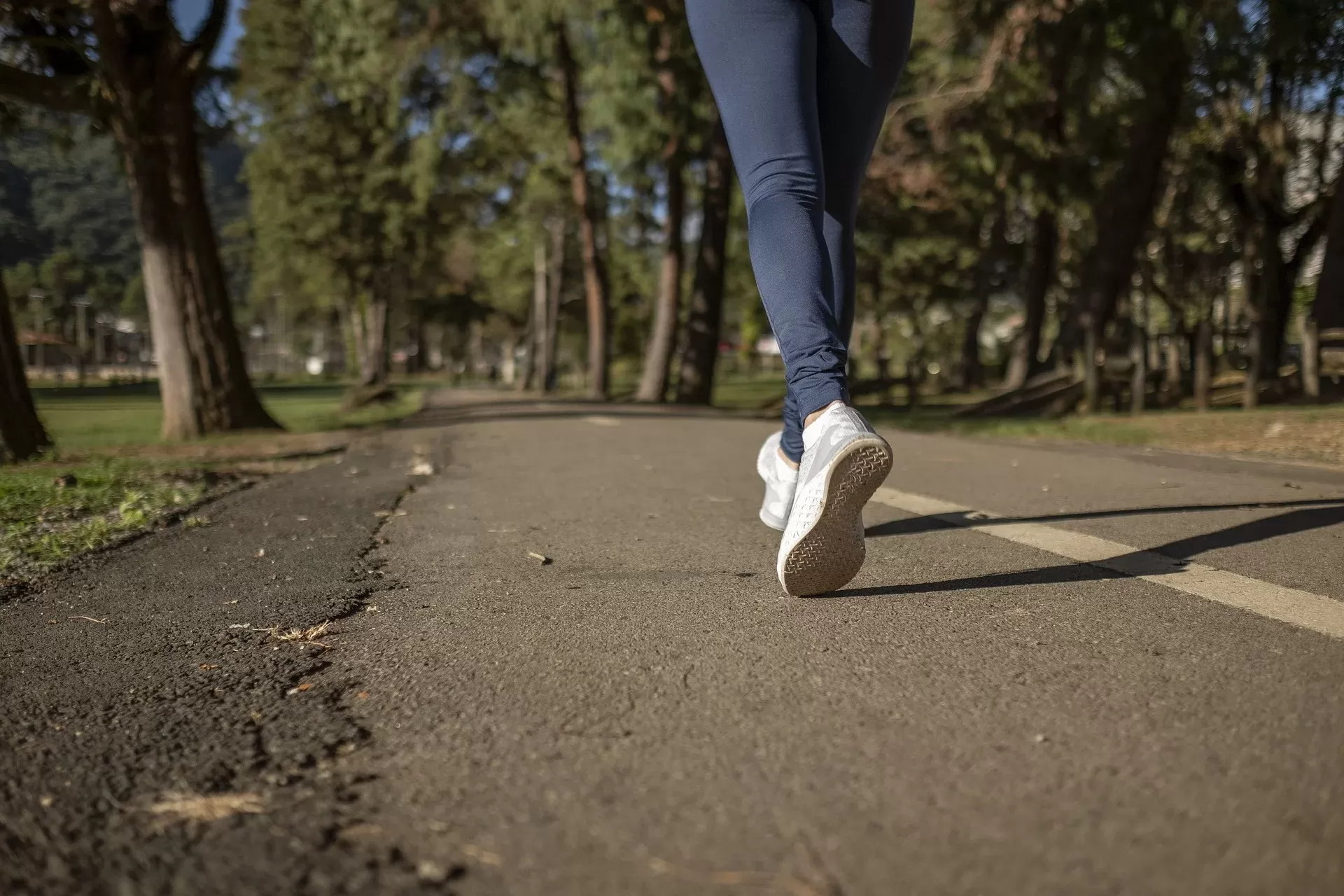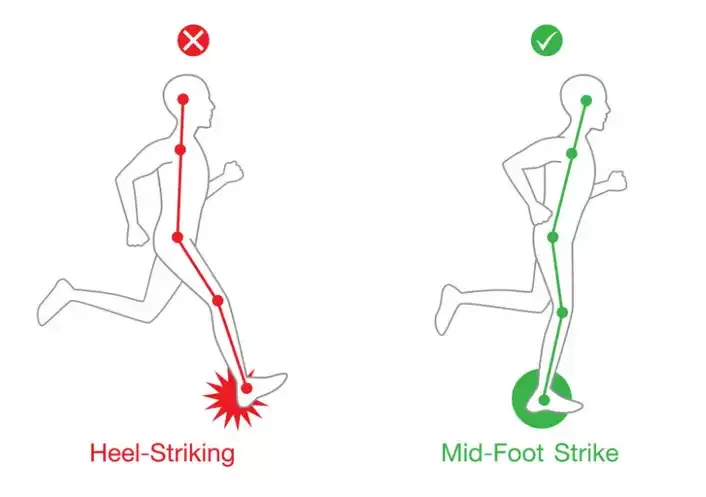3 Types of Footstrikes & How They May Influence Hadlungs treatment success and Hadlungs heel development
Each type of foot strike has its advantages and drawbacks. The following provides an overview of each different foot striking pattern.
Running on the Toes (Forefoot Running)
Proponents of forefoot running claim that this technique enhances forward momentum compared to heel striking and places less stress on the knees.1
Running on your toes can also lead to little hops or bouncing, which is an inefficient way to run for speed. Bouncing causes too much up and down, slowing the drive forward.
It can take a lot of work to assess your footstrike pattern. The best way to do it is to take a slow-motion video of yourself running. To accomplish slow motion analysis, we often ask clients to record themselves from the back (heel view) using a small tripod and a newish iPhone/ smartphone with a slow motion setting (try registering 5 minutes if possible as some traits may only become apparent after some time). Try to capture several strides and look closely to see which part of your foot is hitting the ground first.
Heel Striking
The heel-striking approach is exactly as it sounds: The heel punches the ground first, followed by the midsole and toes.
Runners employ a rearfoot strike because it feels more natural than forefoot or midfoot running.3 There have been a lot of studies into this in recent years, and many of these studies conclude that this is often led by shoe/ trainer design. It has also been noted that the natural strike is on the midfoot and forefoot in parts of Africa where shoes may not be used as readily.
This certainly gets us thinking that heel strike may not be as natural as it sounds. But although this current thought process is taking the main stage, we see a lot of injuries from clients making a sudden shift towards the newer forefoot running gait.
Please remember that your muscle memory and strengths may have been in place for heel strike for 20-plus years, and sudden shifts in the opposite directions will often create stress on weak areas that may have been so neglected they may not be able to take new stress. Ideally, changing to a forefoot running gait should be done around 14 years old, so if you are nearer 40, you may be better off focusing on refining your heel strike technique rather than shifting. That said, people are unique, and with enough focus, anybody can achieve the most extraordinary progress regardless of age.

On the plus side, heel striking stretches and strengthens the calf muscles and ankles. However, pounding the pavements with the hind foot can make some runners more inclined to overstride (like lunging), leading to pain or injury in the knees and hips.
The ankles and knees absorb most of the impact of overstriding, so you must ensure you’re fitted with the proper footwear. Landing on your heels may also cause stress in your lower legs, which can lead to shin splints.
When likened to heel striking, midfoot runners have a shorter time in contact with the ground, which could help quicken your pace. But overall, no scientific evidence suggests heel-striking results at a slower pace.
Most marathon and distance runners tend to heel strike, while most sprinters strike with the forefoot.
Midfoot Running
The midfoot strike running imprint starts with a landing on the midsole of the foot. Devotees of midfoot strike running say this method helps with shock absorption, lessening the impact on the joints.
While research in this field is still ongoing, several studies report the benefits of landing first on the middle or front of your feet when running and then rolling through the toes.
But this style isn’t appropriate for everyone. Some research suggests that midfoot and forefront running can potentially increase the risk of ankle, foot, and Achilles tendon injuries.
The Heel Striking Conversation
Heel striking has been considered poor running form, although many runners naturally strike the heel first. But research suggests it might not be as bad as once thought. It used to be standard advice to alter your footstrike if you were a heel striker because studies showed that a midfoot or forefoot strike is more economical (meaning energy demands are lower), the impact force is reduced, and there is a reduced risk of injury.
However, a 2021 review of several studies showed little evidence proving that a runner's footstrike pattern is linked to injuries.5
SIDE NOTE: It's worth noting that traditionally as previously mentioned, running shoes had an increased heel-to-toe drop to help guide the foot into striking midfoot. But the rise in minimalist and low heel-to-toe drop shoes means this design is no longer the standard.
